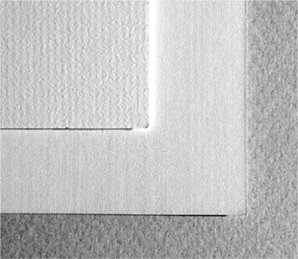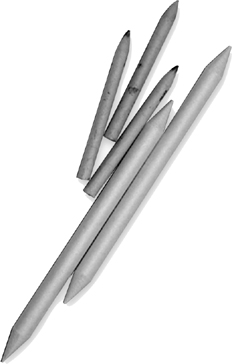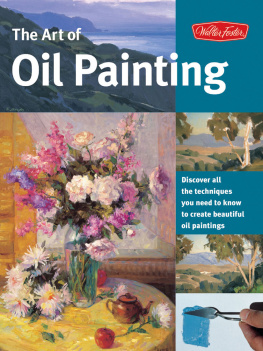The Art of Basic Drawing



A BOUT THE A RTISTS
Having worked as an illustrator in the entertainment industry for many years, Michael Butkus has worked on more than 2,500 films in the areas of advertising, movie poster art, set design, and character design. Michael also invented and illustrated hundreds of characters for Lucas Films Shadow of the Empire.Walter T. Foster was born in Woodland Park, Colorado, in 1891. He began writing self-help art instruction books in the 1920s and produced them in his home in Laguna Beach, California, where he wrote, illustrated, and printed them himself. Michele Maltseff received her B.F.A. and M.F.A. in Painting and Drawing from the Academy of Art College in San Francisco, California. An avid horse lover, Michele has illustrated several books on the subject, and she has won many awards for her work. An internationally recognized artist and one of Americas foremost colorists, William F. Powell has been professionally involved in fine art, commercial art, and technical illustration for more than 35 years. Bill holds awards for his technical art, which has been used for major projects, such as space programs and environmental studies. Mia Tavonatti moved from Michigan to California to attend art school at California State University, Long Beach, where she earned her B.F.A. and M.F.A. in Illustration. She has illustrated 20 books, and her work can be seen on more than 60 book covers and in various magazines.
2005, 2011 Walter Foster Publishing, Inc. (WFP) All rights reserved.
Walter Foster is a registered trademark.
Artwork on front cover, table of contents, and by Michele Maltseff; 1989, 1998, 2003, 2005 WFP.
Digital edition: 978-1-610-59819-4
Hardcover edition: 978-1-560-10913-6
This book has been produced to aid the aspiring artist. Reproduction of the work for study or finished art is permissible. Any art produced or photomechanically reproduced from this publication for commercial purposes is forbidden without written consent from the publisher, Walter Foster Publishing, Inc.
C ONTENTS

C HAPTER 1
I NTRODUCTION TO
B ASIC D RAWING
Although the age-old art of pencil drawing is the basic foundation of all the visual arts, its elemental beauty allows it to stand on its own. And pencil art is amazingly versatileit can range from simple, unshaded contour line drawings to complex, fully rendered compositions with a complete range of tonal values. The projects in this book are taken from some of the most popular drawing books in Walter Fosters How to Draw and Paint Series. And because all the successful artists featured in this book have developed their own special approach to drawing, there are countless lessons to be learned from their individual and distinct perspectives. Youll find all the inspiration you need as you follow a diverse presentation of subject matter and instruction. So grab a pencil and start making your mark!
T OOLS AND M ATERIALS
D rawing is not only fun, it is also an important art form in itself. Even when you write or print your name, you are actually drawing! If you organize the lines, you can make shapes; and when you carry that a bit further and add dark and light shading, your drawings begin to take on a three-dimensional form and look more realistic. One of the great things about drawing is that you can do it anywhere, and the materials are very inexpensive. You do get what you pay for, though, so purchase the best you can afford at the time, and upgrade your supplies whenever possible. Although anything that will make a mark can be used for some type of drawing, youll want to make certain your magnificent efforts will last and not fade over time. Here are some of the materials that will get you off to a good start.

Sketch Pads Conveniently bound drawing pads come in a wide variety of sizes, textures, weights, and bindings. They are particularly handy for making quick sketches and when drawing outdoors. You can use a large sketchbook in the studio for laying out a painting, or take a small one with you for recording quick impressions when you travel. Smooth- to medium-grain paper texture (which is called the tooth) is often an ideal choice.

Drawing Papers For finished works of art, using single sheets of drawing paper is best. They are available in a range of surface textures: smooth grain (plate and hot pressed), medium grain (cold pressed), and rough to very rough. The cold-pressed surface is the most versatile. It is of medium texture but its not totally smooth, so it makes a good surface for a variety of different drawing techniques.

Charcoal Papers Charcoal paper and tablets are also available in a variety of textures. Some of the surface finishes are quite pronounced, and you can use them to enhance the texture in your drawings. These papers also come in a variety of colors, which can add depth and visual interest to your drawings.

Work Station It is a good idea to set up a work area that has good lighting and enough room for you to work and lay out your tools. Of course, an entire room with track lighting, easel, and drawing table is ideal. But all you really need is a place by a window for natural lighting. When drawing at night, you can use a soft white light bulb and a cool white fluorescent light so that you have both warm (yellowish) and cool (bluish) light.

Artists Erasers A kneaded eraser is a must. It can be formed into small wedges and points to remove marks in very tiny areas. Vinyl erasers are good for larger areas; they remove pencil marks completely. Neither eraser will damage the paper surface unless scrubbed too hard.

Tortillons These paper stumps can be used to blend and soften small areas where your finger or a cloth is too large. You can also use the sides to quickly blend large areas. Once the tortillons become dirty, simply rub them on a cloth, and theyre ready to go again.

Next page












